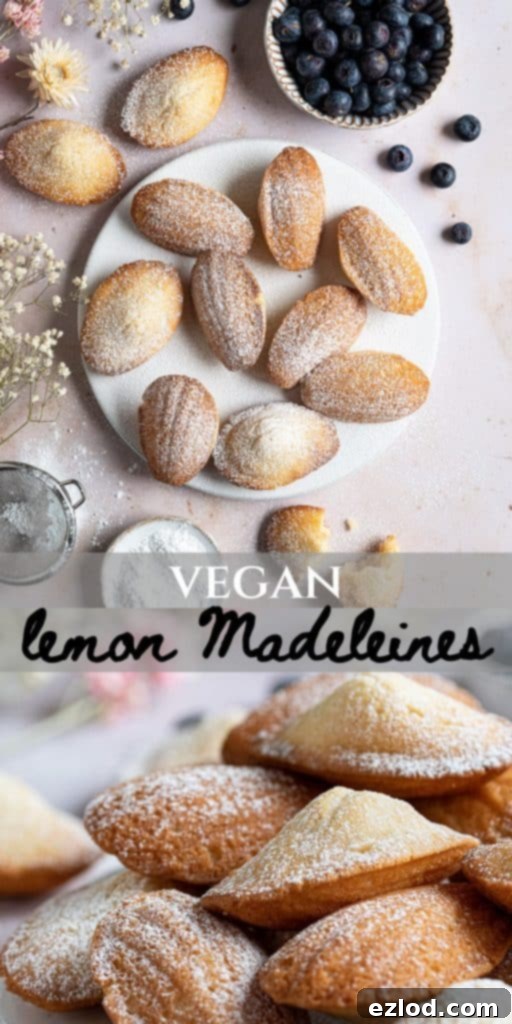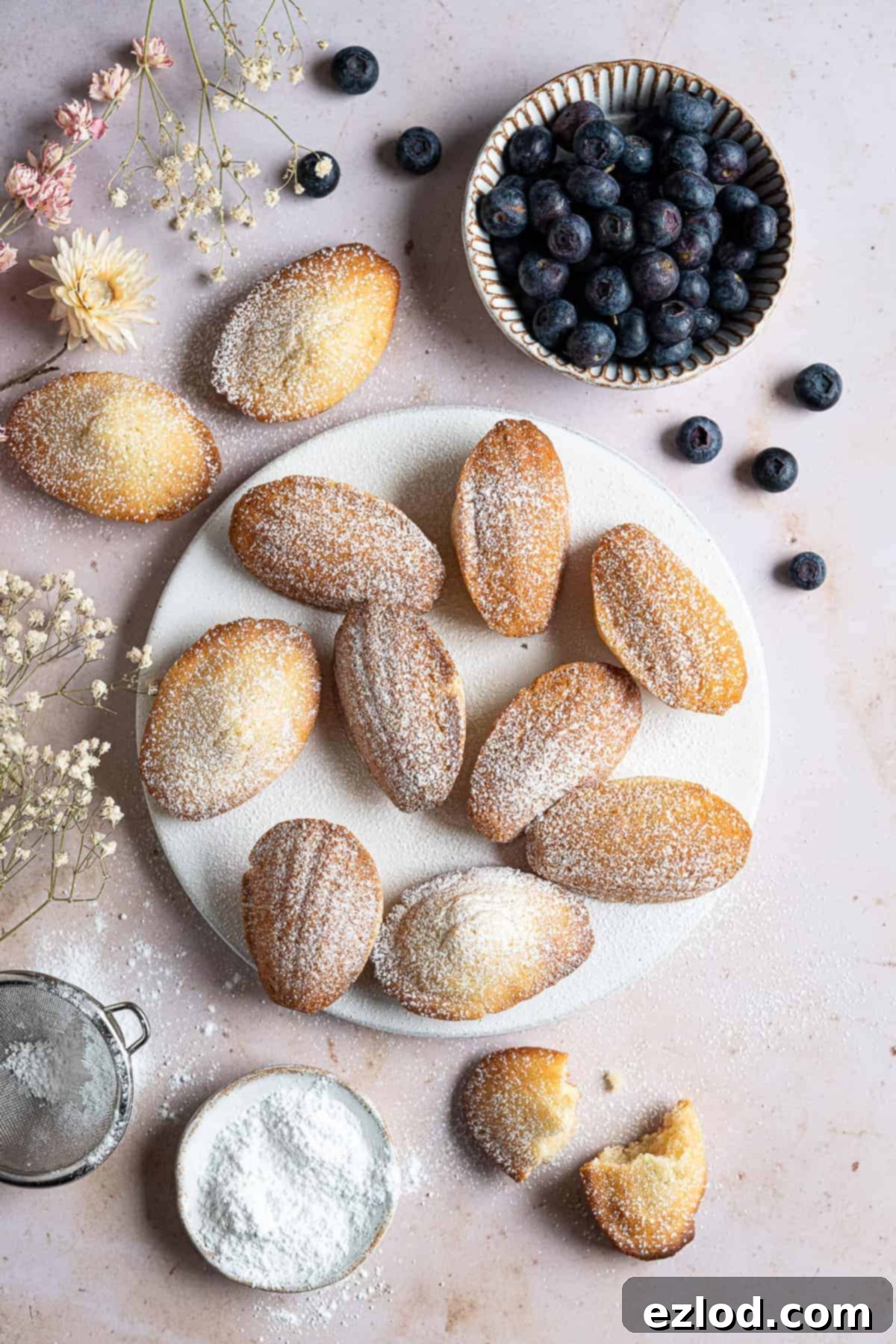Delightfully Delicate Vegan Lemon Madeleines: Your Ultimate Guide to French-Inspired Baking
Discover the magic of homemade vegan Madeleines! These exquisite lemon-flavored shell cakes are incredibly light, perfectly moist, and possess that delicate, melt-in-your-mouth texture that makes them utterly irresistible. Ideal for an elegant afternoon tea, a delightful coffee break, or simply a sweet moment of indulgence.
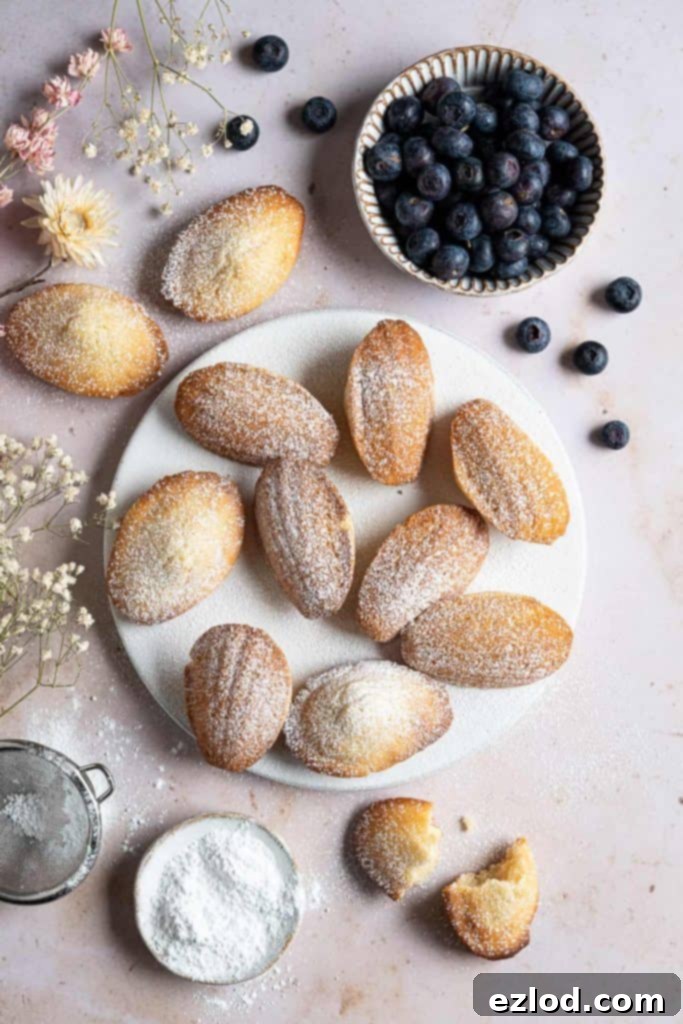
Creating the perfect vegan Madeleine recipe was quite an exciting culinary challenge, demanding numerous rounds of testing and refinement. Yet, after much dedication, I am thrilled to share what I believe is a truly exceptional recipe that captures the essence of these beloved French confections without any animal products. These aren’t just ‘good for vegan’; they are simply excellent Madeleines, period.
Each little cake boasts a tender crumb, a wonderfully moist interior, and most importantly, that signature ‘hump’ – the distinctive rise on one side that Madeleines are famed for. Infused with a delicate yet vibrant lemon flavor, they are so remarkably light and ‘moreish’ that you might find yourself reaching for another, and another, until an entire tray has vanished! They truly embody elegance and simplicity, making them a fantastic treat for any time of day.
What Exactly Are Madeleines? A Glimpse into French Patisserie
Madeleines are a quintessential classic of French patisserie, renowned for their distinctive shell shape and tender, cake-like texture. Originating from the Lorraine region of France, these small sponge cakes are traditionally baked in special Madeleine pans that give them their characteristic scalloped edge and flat underside. While they resemble cookies due to their size, their texture is undeniably that of a light and airy cake, making them a unique category of confection.
Traditionally, Madeleines are made with just four core ingredients: eggs, butter, flour, and sugar. Often, a hint of baking powder and various flavorings, most commonly lemon zest, are added to enhance their profile. The magic of a classic Madeleine lies in its simplicity, where the quality of each ingredient truly shines through. The challenge in veganizing them, therefore, was to mimic this delicate balance and achieve the iconic ‘hump’ and moist crumb without the use of eggs or dairy butter.
As with many seemingly simple French pastries, Madeleines can be surprisingly tricky to master. Their delicate nature requires precision and attention to detail, from the mixing of the batter to the exact baking temperature. But fear not, with this carefully developed vegan recipe and a few key tips, you too can achieve these delightful results in your own kitchen. My aim was to ensure that the vegan version stood proudly alongside its traditional counterpart, offering the same exquisite taste and texture to everyone, regardless of dietary choices.
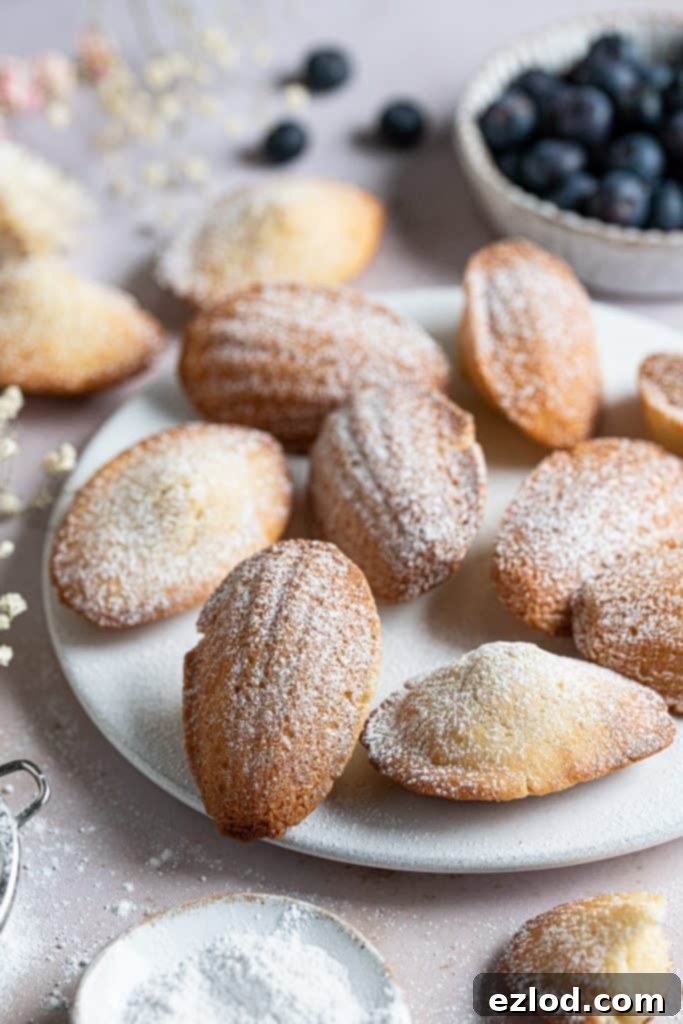
Essential Ingredients for Perfect Vegan Madeleines: A Detailed Guide
Crafting delicious vegan Madeleines requires a thoughtful selection of plant-based ingredients that effectively replicate the roles of their traditional counterparts. Here’s a closer look at what you’ll need and why each component is crucial for achieving that authentic Madeleine experience:
The Core Components:
- Thick Non-Dairy Yogurt: This ingredient is a game-changer for vegan baking, acting as a superb egg replacer. It provides essential moisture, binds the ingredients, and contributes to the tender structure of the cakes. I’ve found Coconut Collaborative yogurt to be exceptionally effective due to its thick consistency. When selecting a yogurt, aim for the thickest plain, unsweetened variety you can find. The consistency of the yogurt significantly impacts the final texture of the Madeleines, so choosing a robust, creamy option is highly recommended. I haven’t extensively tested other substitutions, so sticking to a similar thick non-dairy yogurt will yield the best results.
- Vegan Block Butter: The fat content and texture of the butter are paramount in Madeleines, which rely heavily on butter for their rich flavor and delicate crumb. It’s absolutely essential to use a block-style vegan butter or margarine, rather than the spreadable tub varieties. Spreadable margarines often contain a higher water content, which can negatively affect the cake’s structure and lead to a less tender result. Brands like Naturli Vegan Block or Flora Plant Butter are excellent choices. Using oil instead of block butter is not recommended for this recipe, as much of the authentic Madeleine flavor is derived from the butter itself.
- Non-Dairy Milk: While most unsweetened non-dairy milks will work, I highly recommend using unsweetened soy milk for baking. Soy milk typically boasts a higher protein content compared to other plant milks, which can contribute to a slightly better structure and richness in baked goods. However, if soy is not an option, almond, oat, or cashew milk can also be used, ensuring it’s unsweetened to control the overall sweetness of the Madeleines.
- Caster Sugar (Superfine Sugar): Caster sugar is preferred for its fine granules, which dissolve quickly and evenly into the batter, ensuring a smooth texture without any grittiness. If you don’t have caster sugar, regular granulated sugar can be used as a substitute, though you might need to whisk the wet ingredients a little longer to ensure it fully dissolves.
- Plain Flour (All-Purpose Flour): Standard plain or all-purpose flour forms the structural base of these delicate cakes. For those exploring gluten-free options, a good quality gluten-free flour blend might work, but be prepared to adjust the liquid content slightly, as gluten-free flours can absorb liquids differently. This recipe has not been specifically tested with gluten-free flours, so results may vary.
- Cornflour (Cornstarch): This seemingly small addition plays a significant role in achieving the characteristic light and soft texture of Madeleines. Cornflour helps to tenderize the cake, preventing it from becoming dense. While you can substitute it with an equal amount of plain flour if absolutely necessary, I strongly advise against it if you desire that truly delicate crumb. Alternatively, if you have cake flour on hand, you can use a total of 150g of cake flour in place of both the plain flour and cornflour.
- Lemon Zest: The star of this recipe, fresh lemon zest, provides a bright, aromatic, and genuinely delicate citrus flavor that beautifully complements the sweet cake. Always zest your lemon before juicing it. For a different twist, you could experiment with orange zest, or omit citrus altogether if you prefer a pure vanilla flavor.
- Baking Powder: Unlike traditional Madeleines that rely heavily on eggs for their lift and the formation of the “hump,” our vegan version needs a little extra help. By increasing the amount of baking powder slightly, we ensure these egg-free cakes achieve a lovely rise and the much-coveted signature bump.
- Vanilla Extract: A good quality vanilla extract enhances the overall sweetness and provides a warm, comforting base flavor. This ingredient offers versatility for flavor experimentation; consider swapping it for lemon extract for an intensified lemon punch, orange extract for a different citrus note, delicate orange blossom water for a floral hint, or almond extract for a nutty depth.
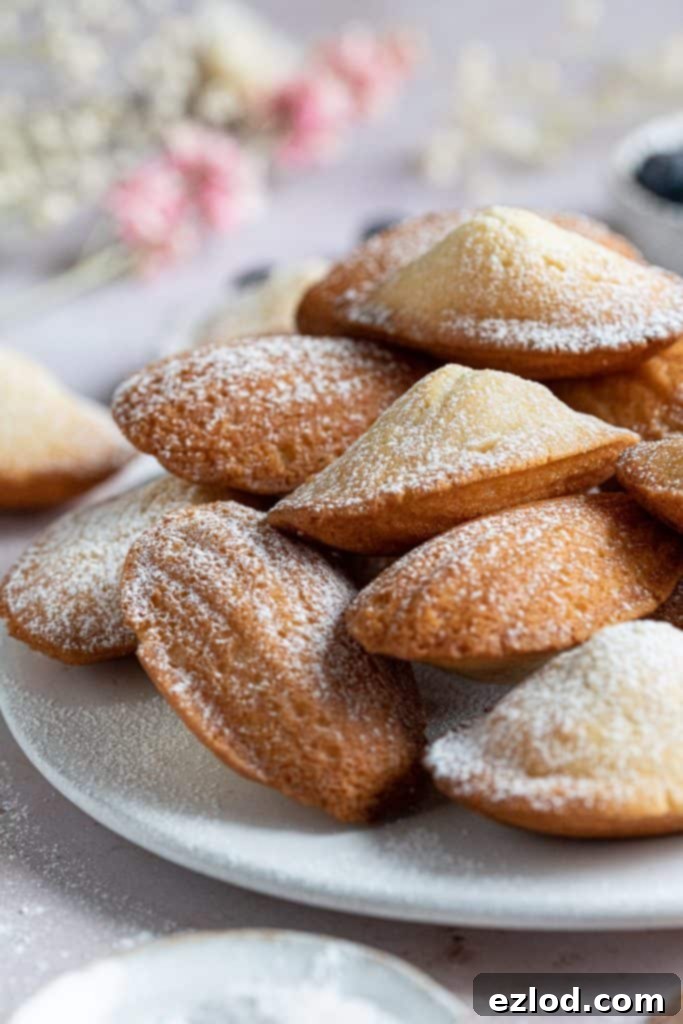
How to Make Vegan Madeleines: A Step-by-Step Guide to Baking Success
Making these vegan Madeleines is a straightforward process, but it requires adherence to specific steps, especially concerning chilling the batter. Precision is your best friend here!
(For precise measurements and full, printable instructions, please refer to the comprehensive recipe card located further down this page.)
- Prepare Dry Ingredients: Begin by sifting together your plain flour, cornflour, baking powder, and a pinch of salt into a medium-sized bowl. Sifting ensures that these dry ingredients are well combined and lump-free, which is essential for a smooth batter and an even rise. Set this mixture aside.
- Combine Wet Ingredients: In a separate, larger bowl, whisk together the melted vegan block butter, thick non-dairy yogurt, non-dairy milk, caster sugar, fresh lemon zest, and vanilla extract. Whisk vigorously until all these ingredients are thoroughly combined and the sugar has largely dissolved. This creates a rich and flavorful liquid base for your Madeleines.
- Form the Batter: Gently add the sifted dry ingredients into the wet mixture. Using a spatula or wooden spoon, mix until just combined. It’s crucial not to over-beat the batter at this stage; overmixing can develop the gluten in the flour too much, leading to tough Madeleines. Mix only until no dry streaks or lumps remain.
- Crucial Chilling Phase: Cover the bowl containing the batter tightly with cling film or a lid, then transfer it to the refrigerator. Allow the batter to chill for a minimum of 2 hours. This step is absolutely non-negotiable for achieving the classic Madeleine ‘hump.’ Chilling helps the flour absorb the liquids fully, allows the flavors to meld, and most importantly, ensures the batter is very cold when it hits the hot oven, which is key for the dramatic rise. The batter can happily chill overnight if that suits your schedule.
- Prepare the Madeleine Tray: While the batter chills, prepare your Madeleine pan(s). Lightly brush each shell-shaped depression with melted vegan butter. If your pan isn’t exceptionally non-stick, or if you’re baking Madeleines for the first time in it, you’ll also want to lightly dust each cavity with flour, tapping out any excess. This extra step helps prevent sticking. Once greased (and floured, if needed), place the entire Madeleine tray in the fridge to chill alongside the batter. This ensures both components are perfectly cold for optimal hump formation.
- Fill the Tray: Once the batter has sufficiently chilled, spoon a dollop of it into the center of each depression in your prepared, cold Madeleine tray. The precise amount will vary slightly depending on your specific pan, but approximately one heaped tablespoon per cavity usually works well. You don’t need to spread the batter out; the heat of the oven will cause it to expand. However, try to ensure the batter roughly follows the shape of the mold rather than just sitting as a round blob. Return any unused batter to the fridge promptly.
- Final Chill & Preheat Oven: Return the filled tray to the fridge for another twenty minutes to ensure it’s thoroughly chilled while you preheat your oven. Preheat your oven to a high temperature (typically 240°C/220°C fan/450°F/gas mark 8) as this initial blast of heat is vital for the characteristic hump.
- Bake the Madeleines: Carefully place the chilled tray into the screaming hot oven. Bake for approximately 4-5 minutes. During this initial high-heat phase, you should observe the Madeleines rapidly puffing up and forming their signature humps, with the edges turning golden. After this initial bake, reduce the oven temperature (to 180°C/160°C fan/350°F/gas mark 4) and continue baking for another 2-5 minutes, or until a toothpick inserted into the center of a Madeleine comes out clean.
- Cooling Process: Once baked, remove the Madeleines from the oven and let them cool in the tin for just a couple of minutes. Then, very gently turn each Madeleine onto its side within its individual depression. This specific cooling method is recommended to prevent the delicate humps from getting squished or the intricate shell pattern from being marked, which could happen if they were immediately transferred to a wire rack. Allow them to cool completely in this manner.
- Baking in Batches (If Applicable): If you only have one Madeleine tray and still have batter chilling in the fridge, you’ll need to repeat the preparation steps. Wash the used pan thoroughly, re-grease it, and then pop it into the freezer for about 10 minutes to rapidly chill it down before filling it with the remaining cold batter. Chill the filled tray again for 20 minutes in the fridge, then bake as described above. This ensures each batch benefits from the same cold pan/cold batter principles.
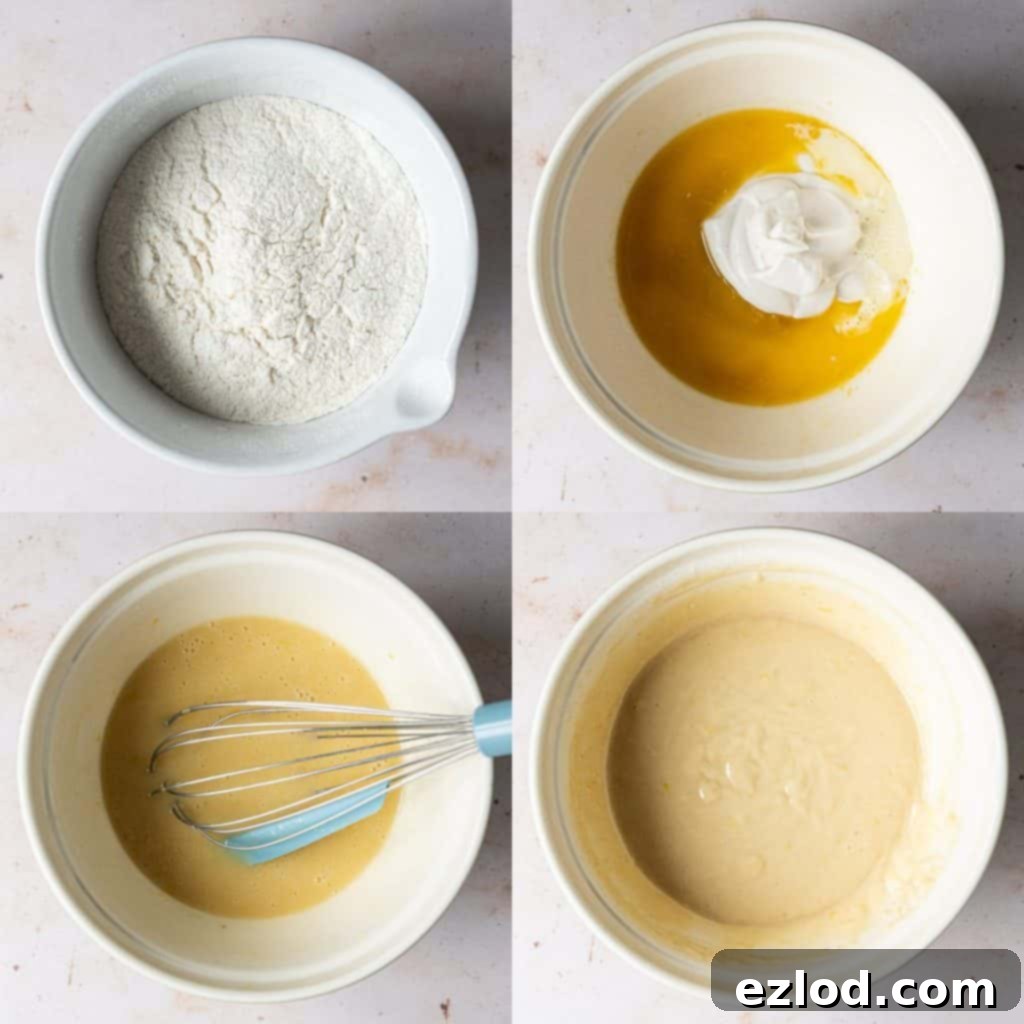
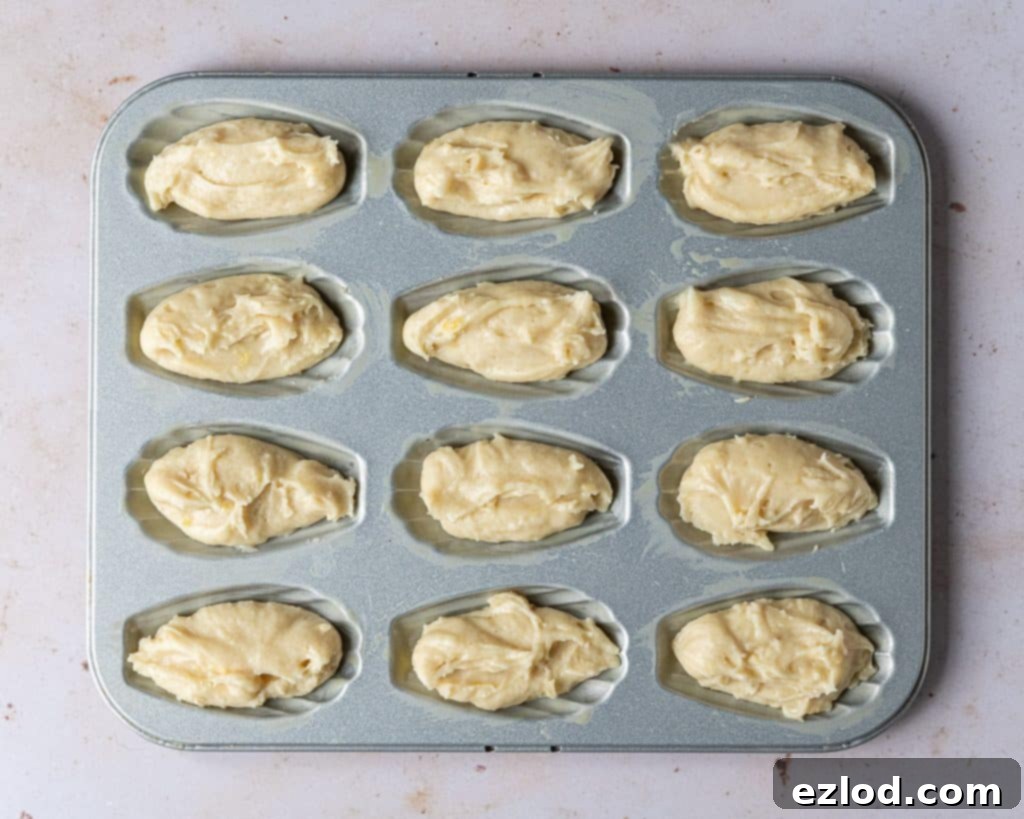
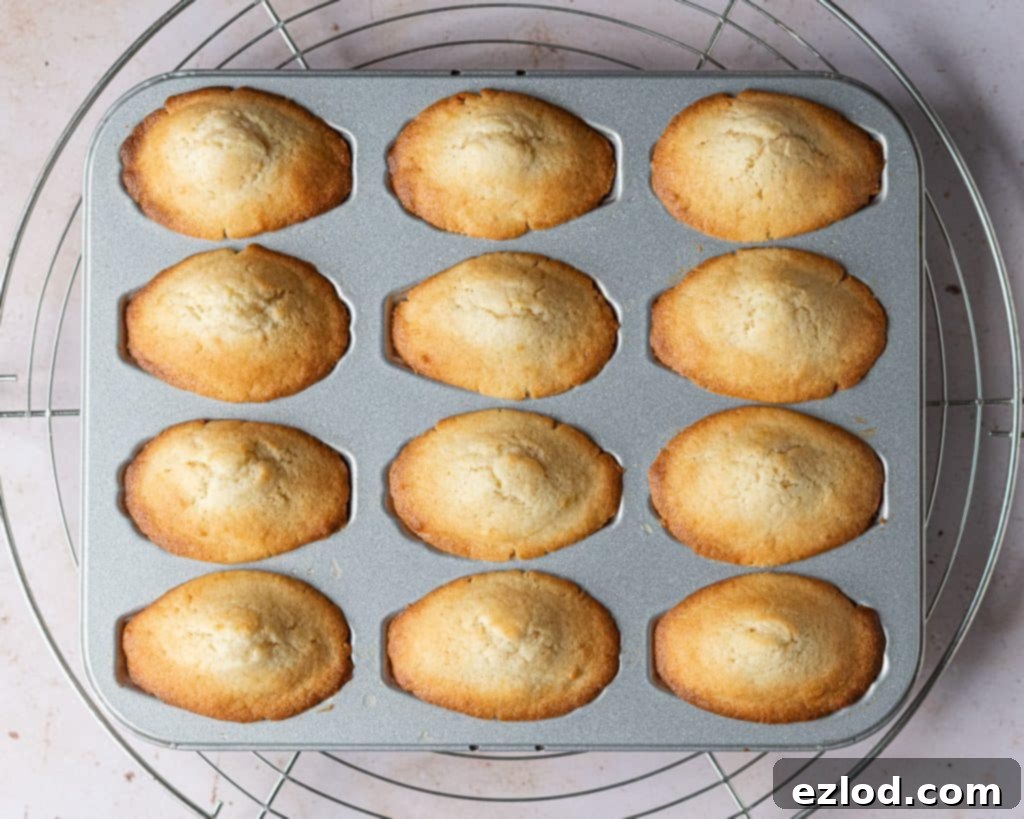

Top Tips for Vegan Madeleine Perfection
- Precision is Key: For the most consistent and best results, always measure your ingredients using a digital kitchen scale and the gram measurements provided. Cup conversions, while convenient, can be notoriously inaccurate for baking, and their use cannot guarantee the optimal outcome for delicate recipes like Madeleines. A gram is always a precise measurement, ensuring replicable success.
- The Right Equipment: A good quality non-stick Madeleine tray is indispensable. Most trays feature 12 depressions. Since this recipe yields approximately 24 Madeleines, you will either need two trays or, like me, bake them in two separate batches, ensuring the pan is properly re-chilled between uses.
- Flavor Variations: While lemon is classic, feel free to experiment! Swap the vanilla extract for lemon extract if you desire an even more intense lemon flavor. Alternatively, try orange extract, fragrant orange blossom water, or rich almond extract to create different delightful flavor profiles.
- Decadent Dip: For an extra touch of indulgence, consider dipping half of each cooled Madeleine into melted dark chocolate. Allow the chocolate to set on parchment paper for a beautiful and delicious finish.
- Enjoy Fresh: Vegan Madeleines, like their traditional counterparts, are best enjoyed on the day they are baked. Their delicate texture and freshness diminish quickly. Any leftovers can be stored in an airtight container at room temperature for up to one day, but for the ultimate experience, aim to consume them promptly.
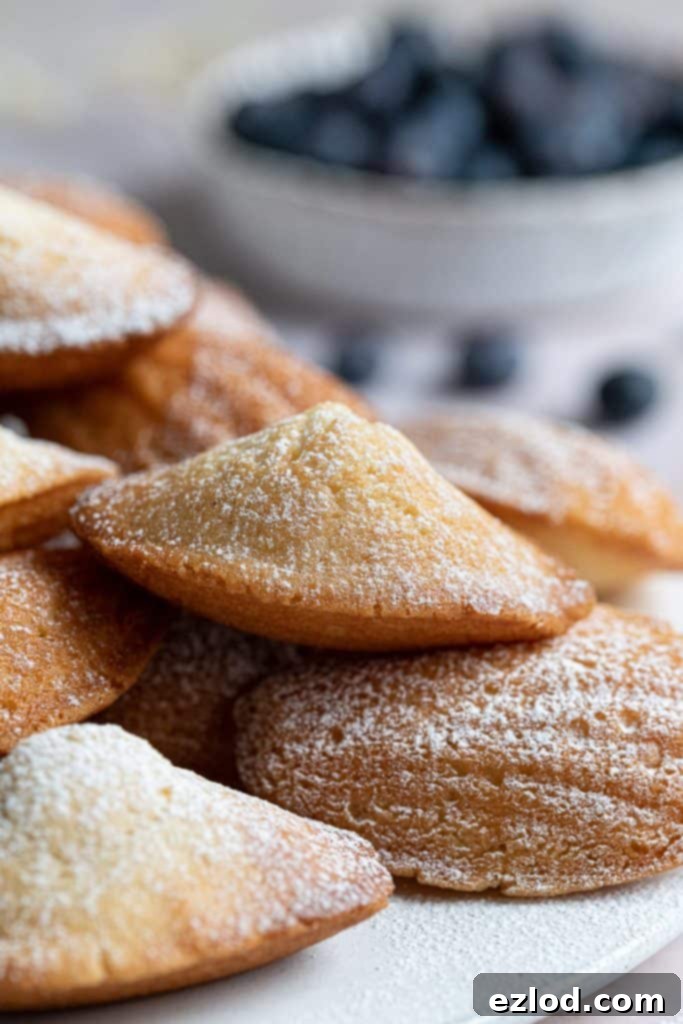
How to Achieve the Iconic Madeleine ‘Hump’ Every Time
The distinctive “hump,” or “nipple,” is the hallmark of a perfectly baked Madeleine. It’s not just for aesthetics; it signifies the ideal texture and rise. Achieving this characteristic bump is less about luck and more about understanding a fundamental baking principle: the shock created by cold batter hitting a very hot oven.
To ensure your vegan Madeleines develop this coveted hump, it is absolutely critical that you meticulously follow the chilling instructions for both the Madeleine batter and the baking tray. The cold batter, when introduced to a high-temperature oven, experiences a rapid expansion. The outside of the Madeleine quickly sets, while the interior continues to expand upwards, pushing out the dough and creating that signature dome. If the batter or the tray isn’t adequately chilled, or if your oven isn’t hot enough, this thermal shock won’t occur effectively, resulting in flatter Madeleines. They will still be delicious, of course, but without that satisfying visual appeal. So, embrace the chill – it’s the secret to success!
Can These Vegan Madeleines Be Frozen?
Yes, these delightful vegan Madeleines freeze exceptionally well, making them perfect for preparing ahead or saving for later cravings. To preserve their freshness and texture, allow them to cool completely to room temperature immediately after baking. Then, transfer them to an airtight freezer bag or container, ensuring they are not squished. For the best quality, freeze them on the same day they are baked.
When you’re ready to enjoy them, simply allow the Madeleines to defrost at room temperature for a few hours. For an extra touch of warmth and to refresh their texture, you can gently warm them in a low oven (around 150°C/300°F) for just a couple of minutes before serving. This will bring back some of that freshly baked aroma and softness.
More Delicious Recipes for a Vegan Afternoon Tea:
- Vegan Scones
- Vegan Lemon Curd
- Vegan Welsh Cakes
- Vegan Shortbread Fingers
- Blueberry Frangipane Tarts
- Vegan Bakewell Tart
- Vegan Earl Grey Tea Loaf
- Vegan Battenberg Cake
- Vegan Fruit and Nut Flapjacks
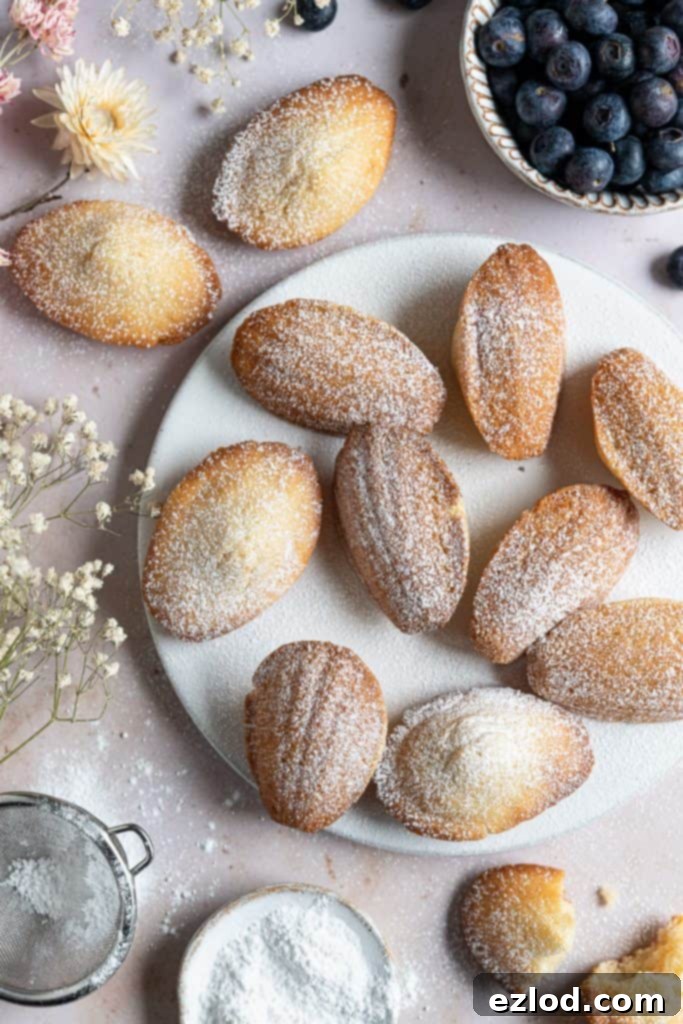
I truly hope you enjoy making and savoring these delightful vegan Madeleines. If you give this recipe a try, please share your experience! Feel free to rate it, leave a comment below, or tag @domestic_gothess on Instagram and use the hashtag #domesticgothess. Your feedback and creations are always inspiring!
*Please note: All images and content featured on Domestic Gothess are protected by copyright. If you wish to share this recipe, kindly do so by utilizing the provided share buttons or linking directly to this page. Reproducing the recipe or content in its entirety, including screenshots, is not permitted.*

Print Recipe
Vegan Madeleines
Ingredients
- 130 g (1 cup + 2 tsp) plain (all-purpose) flour
- 20 g (2 packed Tbsp) cornflour (cornstarch)
- 1 ¼ tsp baking powder
- ⅛ tsp salt
- 100 g (3 ½ oz) vegan block butter/margarine (I use Naturli Vegan Block) melted
- 100 g (½ cup) caster (superfine) sugar
- 90 g (6 Tbsp) thick non-dairy yogurt (I use the Coconut Collaborative)
- 50 ml (3 Tbsp + 1 tsp) unsweetened non-dairy milk (I use soy)
- 1 tsp vanilla extract
- finely grated zest of 1 lemon
Instructions
-
Sift together the flour, cornflour, baking powder and salt. Set aside.
-
In a separate bowl, whisk together the melted butter, caster sugar, yogurt, milk, vanilla extract and lemon zest until very well combined.
-
Tip the dry ingredients into the wet and stir until no dry patches remain but do not over-beat the batter.
-
Cover the bowl and place it in the fridge to chill for at least 2 hours. This step is very important so don’t skip it. The batter will keep in the fridge overnight if needed.
-
Brush your Madeleine tray(s) with melted vegan butter. If you don’t have a really good non-stick one then you will also need to dust it with flour and tap out the excess. Place the tray in the fridge to chill along with the batter.
-
Once the batter has chilled, place a dollop of it in the middle of each depression of the prepared tray. The exact amount of batter that you need is going to vary depending on your tray, so you may want to make a test batch to work it out exactly, but about a tablespoon was the right amount for me. You don’t need to spread the batter out, but try and make sure that it follows the shape of the mold, rather than just sitting in a round blob. Return any unused batter to the fridge.
-
Return the tray(s) to the fridge for twenty minutes to chill while you preheat the oven to 240°C/220°C fan/450°F/gas mark 8
-
Bake the Madeleines in the hot oven for about 4-5 minutes, until they have formed their humps and are golden around the edges; then turn the oven down to 180°C/160°C fan/350°F/gas mark 4 and bake for another 2-5 minutes until a toothpick inserted into the centre comes out clean.
-
Let them cool for a couple of minutes, then carefully turn them on their sides in the tin and leave them to cool completely. Placing them on a wire rack may squish the hump or mark the shell pattern which is why they are cooled like this instead.
-
If you only have the one Madeleine tray and still have batter in the fridge then you will need to wash and re-grease the pan, then pop it in the freezer for 10 minutes to chill before filling it with the remaining batter, chilling for another 20 minutes and baking the rest of the Madeleines as above.
Notes
- For the best results make sure that you follow the recipe closely. As always, I highly recommend weighing your ingredients using the gram measurements (with a digital scale), rather than the cup conversions. Cup measurements are simply not accurate enough for baking and I cannot guarantee the best results if you use them. A gram is always a gram, but a cup won’t always measure out the same amount.
- You will need a non-stick Madeleine tray. Most Madeleine trays have 12 depressions. This recipe will make around 24 Madeleines so you will either need two trays; or do as I do and bake the Madeleines in two batches.
- You can swap the vanilla extract for lemon extract if you want a stronger lemon flavour, or use orange extract, orange blossom water or almond extract instead.
- These vegan madeleines really do need to be eaten on the day they are baked as they go stale very quickly. Any leftovers can be kept in an airtight container for up to one day.
